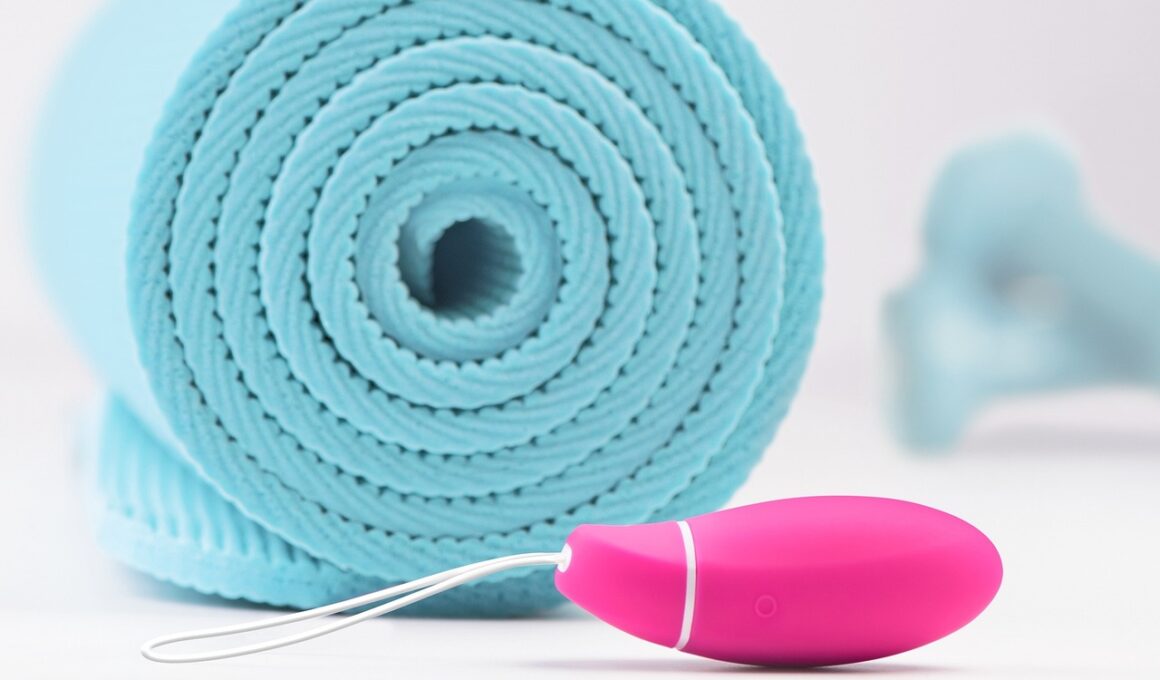Can Pelvic Floor Exercises Help Prevent Postnatal Complications?
Pelvic floor exercises, often called Kegel exercises, are crucial for pregnant and postnatal women. These exercises target the pelvic floor muscles, which support the bladder, uterus, and bowel. Strengthening these muscles can help mitigate various physical challenges that might occur during and after pregnancy. In studies, women who regularly engaged in pelvic floor exercises reported enhanced bladder control, reduced pelvic pain, and improved sexual satisfaction postnatally. One significant postnatal complication is urinary incontinence, severely impacting quality of life, particularly during the early weeks after childbirth. Engaging in pelvic floor exercises as a preventive measure can strengthen the relevant muscle groups. These exercises can be performed anywhere, requiring no special equipment, making them a convenient addition to a daily routine. It’s essential to focus on proper technique when performing these exercises to maximize their benefits. Women should consider consulting a fitness professional specializing in prenatal and postnatal fitness. Gaining insights from experts can ensure they learn ways to incorporate these exercises into their lifestyle safely and effectively. Combining pelvic floor exercises with overall fitness can promote better core stability, enhancing recovery post-delivery.
One essential aspect of postnatal recovery is understanding the unique physical challenges presented during this period. During pregnancy, hormonal changes and weight gain significantly impact the pelvic floor muscles. These changes can lead to decreased muscle tone and flexibility, which may contribute to complications like pelvic organ prolapse or incontinence. Engaging in pelvic floor exercises early in the postpartum phase can help restore muscle strength and support optimal function. A systematic approach to exercise post-delivery includes gradually introducing pelvic floor strengthening routines. Additionally, health care professionals often recommend starting exercises as soon as you feel ready, sometimes even during the early weeks following childbirth. Not every postnatal experience is the same, and recovery does depend on individual circumstances. However, informed choices about exercise can expedite physical healing. Emphasis is placed on integrating breathing techniques with pelvic floor exercises. This combination encourages better relaxation and control over these vital muscle groups. It’s essential to stay attuned to your body, gradually increasing the intensity of exercises as recovery progresses, ensuring safety and efficiency during each stage of recovery. Hence, you’ll foster a supportive structure for overall health and wellbeing.
The Psychological Benefits of Pelvic Floor Exercises
In addition to the physical benefits, pelvic floor exercises also have psychological advantages for new mothers. Pregnancy and childbirth often lead to significant emotional changes due to hormonal fluctuations. Women may experience postpartum depression or anxiety, profoundly affecting their daily lives. Engaging in regular pelvic floor exercises can also contribute to a sense of control and improved mental wellbeing. Feeling stronger physically enhances body confidence, especially important after childbirth. As mothers begin to regain physical strength, they may also notice a positive shift in self-image and emotional health. This improvement in psychological wellbeing can be attributed to the endorphins released during physical activity. These feel-good hormones contribute to reduced feelings of stress and anxiety, promoting a more positive outlook. Furthermore, dedicating time to exercise can also encourage mindfulness practices. Focusing on breathing and aligning the body supports mental clarity and reduces feelings of being overwhelmed. Incorporating pelvic floor exercises into daily routines can develop healthy habits benefiting physical strength and emotional resilience, ensuring that mothers can navigate the challenges of parenthood more effectively and confidently, fostering a happier nurturing environment.
Establishing a personalized program for pelvic floor exercises is highly beneficial during recovery. A tailored exercise regimen acknowledges the varying needs of each individual. It’s advantageous to consult with a healthcare professional, such as a physical therapist educated in postnatal rehabilitation strategies. They can assess specific situations and recommend appropriate exercises. A program that includes guidance on how to engage the pelvic floor effectively ensures proper technique for maximum results. This personalized approach can prevent common mistakes that might hinder recovery or lead to injury. Moreover, session designs should consider including other essential components of overall fitness. Strength, flexibility, and cardiovascular exercises complement pelvic floor routines, enhancing their effectiveness. Combining these modalities ensures comprehensive fitness benefits, promoting overall health. Engaging in a variety of safe physical activities encourages sustained motivation, further enhancing adherence to fitness regimes. Strategies could involve group classes, access to class online, or individualized home programs based on preferences. Support from fellow new mothers can create a community of encouragement, blending social interaction with fitness goals for a robust recovery journey. Long-term benefits are rooted in embedded routines grounded in professional guidance and motivation.
Tracking Progress and Maintaining Motivation
Monitoring progress is essential for any exercise program, particularly postpartum. Keeping track of improvements in strength, endurance, and overall wellbeing can provide motivation during challenging phases. Setting realistic goals, such as achieving a specific number of repetitions or duration for pelvic floor exercises, keeps women focused and engaged in their practices. Utilizing mobile applications, journals, or fitness trackers encourages accountability and provides a visual representation of achievements. Sharing these milestones with friends or family can further enhance motivation. In addition, recognizing and celebrating small successes along the way reminds women of their dedication and hard work. Motivation can also be found in the supportive postpartum community through social media or group classes, where shared experiences and insights can inspire commitment. However, adapting to the ever-changing needs of motherhood is vital. Individuals need to practice self-compassion and adjust expectations as circumstances evolve. Patience during recovery fosters resilience, allowing women to embrace the process positively. Moments of setbacks may occur, but resilience builds strength. Engaging in conversations with healthcare providers about concerns ensures emotional and physical health is prioritized, solidifying the path toward recovery and fitness.
Integrating pelvic floor exercises into daily activities enhances overall effectiveness and fosters a balanced lifestyle. Simultaneously focusing on these exercises and engaging in regular tasks can increase adherence, ensuring these routines blend seamlessly into everyday life. Women’s experiences with new babies often become busy and hectic, leading to exercise being sidelined. However, incorporating pelvic floor exercises during common activities, like feeding or waiting in line, can create opportunities for practice without significant time commitments. This approach addresses concerns about time management and creates a healthier lifestyle. Furthermore, connecting these exercises with established routines encourages consistency, embedding essential pelvic floor awareness into daily habits. Forming a mindset where fitness intertwines with daily responsibilities provides motivation and focuses on wellbeing. Another effective strategy involves seeking support from family members or friends. Sharing information about the importance of pelvic health can generate a support system that ensures commitment to exercise goals. Regular practice makes a difference. Enhancing pelvic floor strength significantly impacts life quality, fostering a sense of accomplishment during the journey into motherhood and overall wellbeing, while simultaneously building a supportive community around these important health practices.
Conclusion
In summary, pelvic floor exercises play a vital role in preventing postnatal complications for women. Empowering mothers with knowledge about physical recovery promotes healthier living and encourages long-term wellness strategies. Emphasizing the importance of pelvic floor health is fundamental in optimizing overall fitness and emotional wellbeing. Early engagement in appropriate exercises is crucial for restoring core strength and stability that will support their bodies post-delivery. This increased awareness can help combat potential issues like incontinence, pelvic pain, and even sexual dysfunction. Mental health benefits also come into play when women prioritize physical fitness. Beyond the physical realm, these exercises enhance body confidence and emotional clarity during the postpartum journey. By creating personalized programs with professional guidance, mothers can embrace an achievable fitness journey while integrating inspections with day-to-day tasks. Encouragement from peers and building accountability frameworks serves to enrich experiences during recovery and fitness. Such commitment can foster positive habits. Thus, prioritizing pelvic floor fitness emerges as a critical element of postnatal care, ultimately benefiting both mothers and their families as they navigate the joys and challenges of motherhood.
This article highlights the significance of pelvic floor exercises for new mothers, emphasizing their pivotal role in rehabilitation and health. Ultimately, proper education around pelvic floor strength can improve lifelong health and encourage resilient patterns in personal care. Awareness about pelvic health is essential not only for physical recovery but also for maintaining mental wellness as individuals adjust to this transformative stage of life. Ensuring consistent integration of fitness practices can create a supportive environment that nurtures healthier families and improves the challenges that accompany motherhood. Healthier mothers undoubtedly play a role in raising healthier children, showcasing the intertwined nature of family wellbeing and maternal health. Thus, fostering an environment where community support and education flourish becomes essential to expand access to healthcare knowledge. Families united in their approach to maternal fitness can create a lasting positive impact within society. Following this journey will undoubtedly highlight the importance of commitment to woman-centric health, paving the way for contributing to healthier generations to come. As you embrace the postpartum period, remember to prioritize pelvic health for yourself and your family by engaging with resources and communities promoting pelvic floor fitness.


